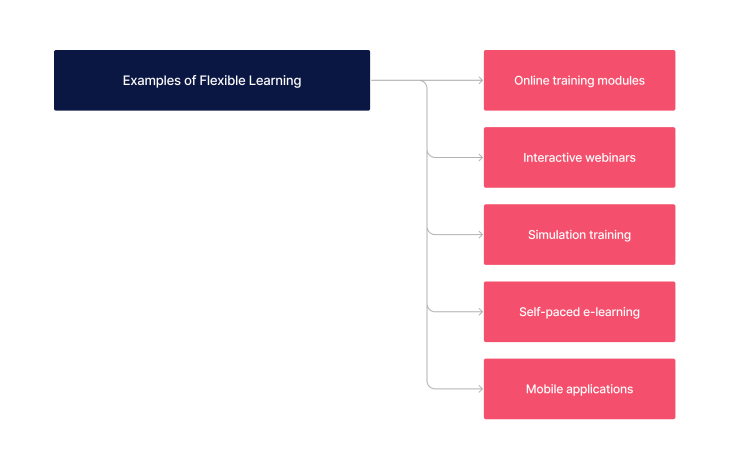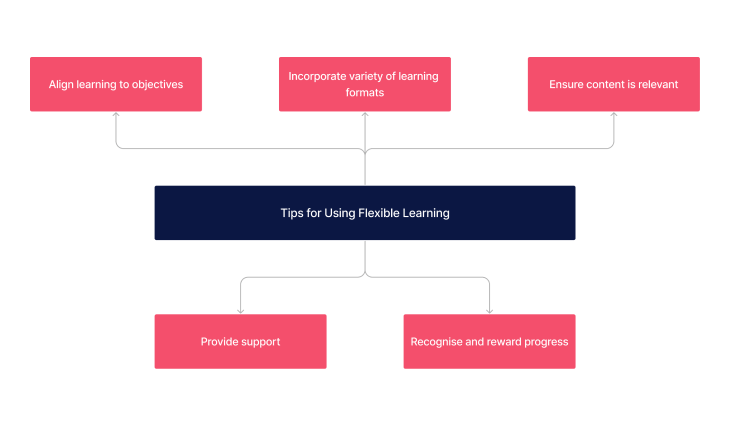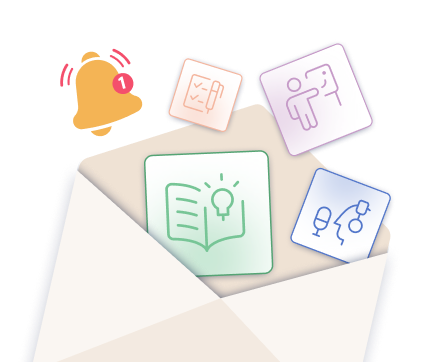In the dynamic and complex world of healthcare, the continuous professional development of healthcare workers is paramount. Flexible learning emerges as a key strategy in this endeavor, offering a tailored, adaptive educational experience that aligns with the diverse needs and challenging schedules of healthcare professionals. This strategy not only enhances the learning experience but also fosters a culture of continuous improvement and adaptability. By exploring the multifaceted impact of flexible learning, this article aims to provide a deeper understanding of its role in improving employee engagement and retention, ultimately contributing to the delivery of high-quality healthcare services.
What is Flexible Learning?
Flexible learning represents a significant shift in educational methodology, prioritizing learner convenience and adaptability. It encompasses a variety of learning formats that allow individuals to engage with educational content on their terms, facilitating a more balanced approach to work and learning. This modern educational philosophy is especially pertinent in today's technology-driven era, where flexibility and customisation in learning are increasingly valued. It offers learners the opportunity to engage with material in a way that suits their unique learning styles and life circumstances, thereby enhancing both the enjoyment and effectiveness of the learning experience.
Flexible Learning in Healthcare
Within the healthcare sector, the implementation of flexible learning is both a strategic and practical necessity. Healthcare professionals face unpredictable schedules, high-stress environments, and the constant need to stay updated with medical advancements. Flexible learning provides a viable solution to these challenges, enabling healthcare workers to pursue continual education without disrupting their essential service delivery. This flexibility is crucial for ensuring that healthcare workers remain at the forefront of medical knowledge and practice, ultimately enhancing patient care quality.
What is Employee Retention and Engagement?
Employee retention and engagement are critical indicators of an organisation's health, especially in the healthcare sector. These metrics reflect the organisation's ability to not only maintain a stable workforce but also to foster a work environment where employees are emotionally invested and motivated. In healthcare, where the well-being of patients is directly impacted by the performance of the staff, high levels of retention and engagement are indispensable. They lead to a more committed and satisfied workforce, lower turnover, and, most importantly, a higher standard of patient care.
Examples of Flexible Learning

The landscape of flexible learning in healthcare is diverse and evolving, encompassing a variety of methods and tools to accommodate different learning preferences and needs. From online modules that allow self-paced learning to interactive simulations that provide hands-on experience, flexible learning methodologies are reshaping how healthcare education is delivered. These methods not only make learning more accessible but also more engaging, helping healthcare professionals to efficiently integrate continual learning into their busy schedules.
- Online training modules for care worker training
- Interactive webinars and virtual workshops
- Simulation training for practical skills acquisition
- Self-paced e-learning courses
- Mobile learning applications for on-the-go training
Using Flexible Learning to Boost Employee Engagement and Retention
Flexible learning has a significant impact on employee engagement and retention, particularly in the high-stress and fast-paced environment of healthcare. By offering learning solutions that cater to individual needs and schedules, organisations demonstrate their commitment to their employees' professional growth and well-being. This approach not only enriches the learning experience but also fosters a workplace culture that values and supports its workforce, leading to increased job satisfaction and loyalty.
The following points illustrate how:
- Personalised learning paths increase job satisfaction and motivation.
- Flexible schedules reduce work-life balance conflicts, enhancing employee well-being.
- Continuous professional development opportunities foster a sense of growth and career progression.
- Accessible learning resources support diverse learning needs and styles.
- Interactive and collaborative learning environments boost team cohesion and morale.
Steps to Implement Flexible Learning for Employee Engagement and Retention

Implementing flexible learning in a healthcare setting requires a thoughtful and structured approach. It involves understanding the unique needs of the healthcare workforce and developing a strategy that integrates various flexible learning options. This process is essential for creating an effective and responsive learning environment that supports the professional development of healthcare workers, enhances their job satisfaction, and aligns with the organisation's goals.
To successfully implement flexible learning in healthcare, organisations should follow these steps:
- Assess the learning needs and preferences of healthcare staff.
- Develop a range of flexible learning options tailored to these needs.
- Select and implement an appropriate learning management system.
- Train staff in using flexible learning tools and resources.
- Regularly review and update learning content and strategies.
- Collect feedback from employees to continuously improve the learning experience.
What are the Benefits and Negatives of Using Flexible Learning for Employee Retention and Engagement
While flexible learning offers numerous advantages, particularly in terms of accessibility and adaptability, it is not without its challenges. Understanding both the positive and negative aspects of flexible learning is crucial for healthcare organisations to effectively implement this approach. This balanced perspective allows for the development of strategies that maximise the benefits while addressing potential drawbacks.
Here's an overview:
| Benefits | Negatives |
|---|---|
| Adapts to diverse learning styles and schedules | Potential lack of face-to-face interaction and peer learning opportunities |
| Increases accessibility and convenience of training | Dependence on technology and potential digital divide issues |
| Personalised learning experiences enhance engagement | Requires self-discipline and motivation from learners |
| Enables continuous and up-to-date learning | Challenges in maintaining consistent quality across different learning formats |
| Facilitates work-life balance for healthcare professionals | Possible technical issues and the need for ongoing IT support |
| Supports remote and geographically dispersed learners | Less opportunity for hands-on, practical skill development |
Tips for Using Flexible Learning to Improve Employee Retention and Engagement

Effectively leveraging flexible learning to enhance employee engagement and retention requires a strategic approach. It's about more than just providing flexible options; it's about creating a learning environment that resonates with the needs of healthcare professionals. This involves careful planning, thoughtful design, and ongoing support to ensure that the learning experience is not only flexible but also meaningful and relevant.
Here are some tips to effectively use flexible learning for enhancing engagement and retention:
- Align learning objectives with organisational goals and employee career paths.
- Incorporate a variety of learning formats to cater to different preferences.
- Ensure the content is relevant, up-to-date, and engaging.
- Provide support and resources for learners who may struggle with technology.
- Recognise and reward progress and achievements in learning.
Want a healthcare LMS that can support flexible learning?
Contact Ausmed today and see how we can support your organisation!
Tools for Implementing Flexible Learning
Selecting the right tools and resources is a critical step in implementing flexible learning in healthcare. The tools chosen should not only facilitate diverse and accessible learning experiences but also align with the specific learning objectives and organisational goals. This careful selection ensures that the investment in flexible learning yields positive results in terms of employee engagement and retention.
Here's a list of effective tools:
- Learning Management Systems (LMS) for course delivery and tracking
- Online course platforms for accessing a wide range of content
- Virtual classroom software for live, interactive sessions
- Mobile learning applications for learning on the move
- Collaborative tools for group projects and discussions
Related Resources
- Guide to Mandatory Training
- LMS in Healthcare: The Roles, Benefits and Pros and Cons
- What Are Learning Analytics?
- A Step-by-Step Guide to Data Collection for Learning Analytics
- What Are the Key Learning Analytics Metrics?
- How to Create a Culture of Continuous Learning
- Guide to Compliance Training (for Healthcare Managers)
- Guide to Building a Competency Framework for Skill Development
- How to Manage an Effective Staff Training Program
- Identifying Skills Gaps with Learning Analytics
- How Do I Use Learning Analytics for Competency Mapping?
- A Guide to Personalised Learning in Healthcare
Conclusion
Flexible learning is a transformative approach in healthcare, offering numerous benefits for employee engagement and retention. By adopting flexible learning strategies, healthcare organisations can ensure a well-trained workforce and create a supportive and dynamic work environment, leading to improved patient care, job satisfaction, and overall organisational success.
References
- HealthManagement.org. (2017). The Importance of Continuous Education in Healthcare. Available at: https://healthmanagement.org/
- Adobe eLearning. (2023). The Future of Learning: Exploring eLearning in Healthcare. Available at: https://elearning.adobe.com/
- CareerCert. (n.d.). The Effective Use of Learning Modalities in Healthcare Education. Available at: https://www.careercert.com/
- Health Education England. (2022). Blended learning offers flexibility to train our future healthcare workforce. Available at: https://www.hee.nhs.uk/
- Psych Times. (2024). 8 Benefits of eLearning in the Healthcare Industry. Available at: https://psychtimes.com/



